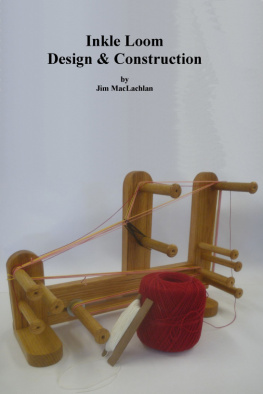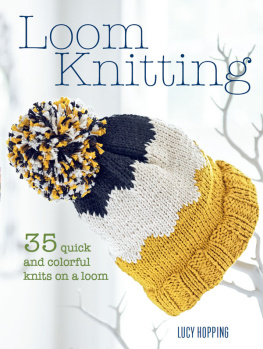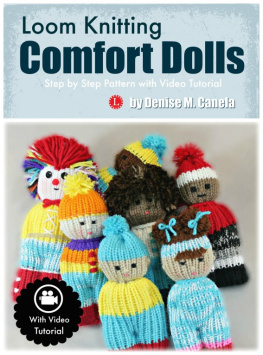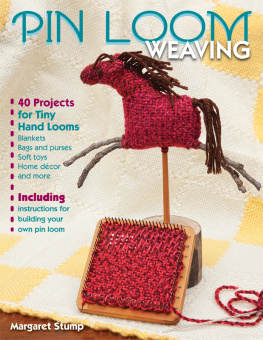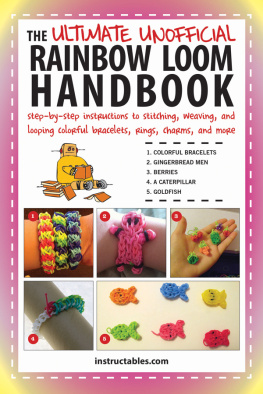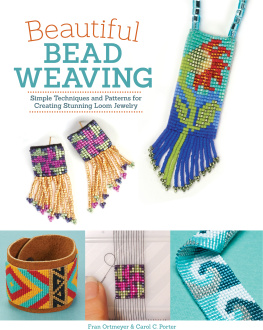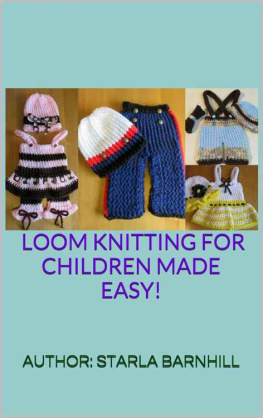Inkle Loom Design &Construction
By Jim MacLachlan
Copyright 2017 by Jim MacLachlan
Published by Jim MacLachlan at Smashwords
Smashwords Edition License Notes
This ebook is licensed for your personalenjoyment only. This ebook may not be re-sold or given away toother people. If you would like to share this book with anotherperson, please purchase an additional copy for each recipient. Ifyoure reading this book and did not purchase it, or it was notpurchased for your enjoyment only, then please return toSmashwords.com or your favorite retailer and purchase your owncopy. Thank you for respecting the hard work of this author.
Introduction
When my daughter joined the Society forCreative Anachronism (SCA) & wanted to start weavingwith an Inkle loom, we built one from plans & pictures we foundon the Internet. I'm a woodworker & they looked simple enough,but we made some grave mistakes with that first one because wedidn't understand their design, proportions, or how they workedproperly. Since then, my daughter has become an accomplished weaverwhile I've examined, discussed, repaired, & built quite a fewlooms for her & others, as well as read everything I could findabout them. It's been an education, a laborious one since Icouldn't find a book devoted to their construction.
The art of inkle weaving is quite old. The wordinkle is an old word for a band or ribbon which was woven ontraditional looms, but I couldn't find anything about the basicproportions or geometry of dedicated inkle looms. I've dabbled withColonial woodworking (16th - 18th century U.S.) for decades, so Iknow that proportional design was often used before measurementswere standardized in the first half of the 19th century. Inkleswere certainly made before that & the theFlorilegium (SCA archive) site states, "The SCA is aninternational organization dedicated to researching and re-creatingthe arts and skills of pre-17th-century Europe". They aregenerally thorough, written by people dedicated to historicalaccuracy, so this lack was a mystery. It was solved when I foundthat the one-sided, hobby Inkle looms first appeared sometime afterthe middle of the 19th century. This was after measurements werestandardized, so they were never built by proportions. Since theinformation wasn't available I decided to figure it out on myown.
Inkle looms are simple & portable.They're somewhat limited compared to the more traditional sort, butthey're also a lot less expensive; often less than a tenth the costwhen homemade. I've seen many imaginative designs on the Internet,but most are simply pictures or cookbook instructions. Many don'twork well, even those built by otherwise reputable companies.Critical measurements, such as warp length, are usually missing. Ifound almost no meaningful discussion on design, construction,& portability which must be balanced against warp length,width, & looks. These are critical points to prioritize &I'll walk you through that as well as modifying & fixing avariety of designs.
EricSloane found that the process of ordering his findings& thoughts into a book was the best way to learn a subject.That seemed like a good idea & this is the result. We'll startby breaking the looms into their component pieces & discussthem in relation to each other so you can avoid design flawswhether you're building one from scratch or purchasing one. I'llshow you the basics & preferences my daughter & I learnedfrom experienced weavers. Finally, I'll design looms starting froman idea with drawings & photos all the way up to simple,finished plans. I'll detail a variety of modifications &construction tips along the way. If you've already invested in aloom but are frustrated by certain features, you may be able to fixthese with a few simple, inexpensive tools.
I was told that InkleWeaving by Helene Bress was The Bible of InkleWeaving', but it only has one short chapter on the construction oflooms. Her points on deficiencies in some designs & herknowledge of weaving are impressive, but I found the loom designsin her book decidedly less so. (To be fair, she wasn't a carpenter,but a weaver extraordinaire.) Quite a few of the plans I found onthe Internet were a rehash of the two in Bress book, so I'll buildher small loom & include it here along with some better,modified versions. I'll also discuss the floor loom in her book& offer some alternatives plus provide plans for severalcompletely different designs, several of which are far better.
I had to make up some terms & standards as Iwent along, so read this carefully & in order or myexplanations might not make sense, especially if you're new toweaving. I'd suggest reading through it once & then referringback to specific points as needed. Use the dimensions ondrawings; some plans aren't drawn precisely & others didn'ttransfer with proper proportions. If the plans or formatting (ThePDF version kept the formatting the best, the epub has the worst.)aren't satisfactory, email me (see the end of this document) &I'll send the original images or PDF version with explanations. I'mnot a graphic artist & didn't hire one for this hobby project,so drawings & photos are good enough to get the point across,but they're not professional quality.
I've included hyperlinks both inside thedocument & to generally safe & stable Internet sites. Usethe latter at your own risk, though. Obviously, I have no controlover them.
All measurements are in SAEunits since I live in the US where we still haven'tchanged to metric for most things, especially not woodworking. Iwas deliberately casual in the way I wrote this & use commonterminology.
1" = One inch
1' = One foot or 12 inches
1-1/2" = One & one half inch, the same as1.5", but decimals are rarely used with SAE board measurementssince fractions convert easier & are what our tools show.
Warning &Disclaimer
READ THIS. I'm serious.
Use of any & allconstruction methods I describe or you think I allude to is at yourown risk. I may use shorthand or do things that aredangerous. I'm not writing safety instructions since I don't knowwhat tools you're using, your age, or skill level.
Working with wood is inherently dangerous.Anyone using any of the tools or techniques in this book ispersonally responsible for learning the proper methods involved.You assume all risks and accept complete responsibility for any andall damages and injury of any kind, including death, which mayresult.
Before using any hand or power tool with whichyou are unfamiliar, consult its operating instructions, and ifnecessary, seek instruction by a qualified person well versed inits operation and appropriate safety techniques. It remains up toyou to make sure what you're doing is safe. The joy of woodworking,rewarding as it is, is not worth the cost of getting hurt. Pleasekeep safety foremost in your mind whenever you're in the shop.
If you hurt yourself based on anything inthis document, that's your responsibility.
By reading further, you agree to theabove.
Table of Contents
ImportantTerms
Before reading further, you need to know how to warp& use an Inkle loom . No real expertise is needed,but an understanding of the basics is required.
The F-style loom (My naming convention,some call it the Bress or Helen Bress style.) is the most commonconfiguration where the top 2 warp pins (R1) & (R2) are on thesame plane vertically, but are far apart horizontally, usuallyrequiring separate uprights, as in the picture below. This typewill allow all warping configurations, but it doesn't pack as muchwarp length on smaller looms so it's a good beginner's loom. Theone pictured below is based on a loom in Bress' book.


